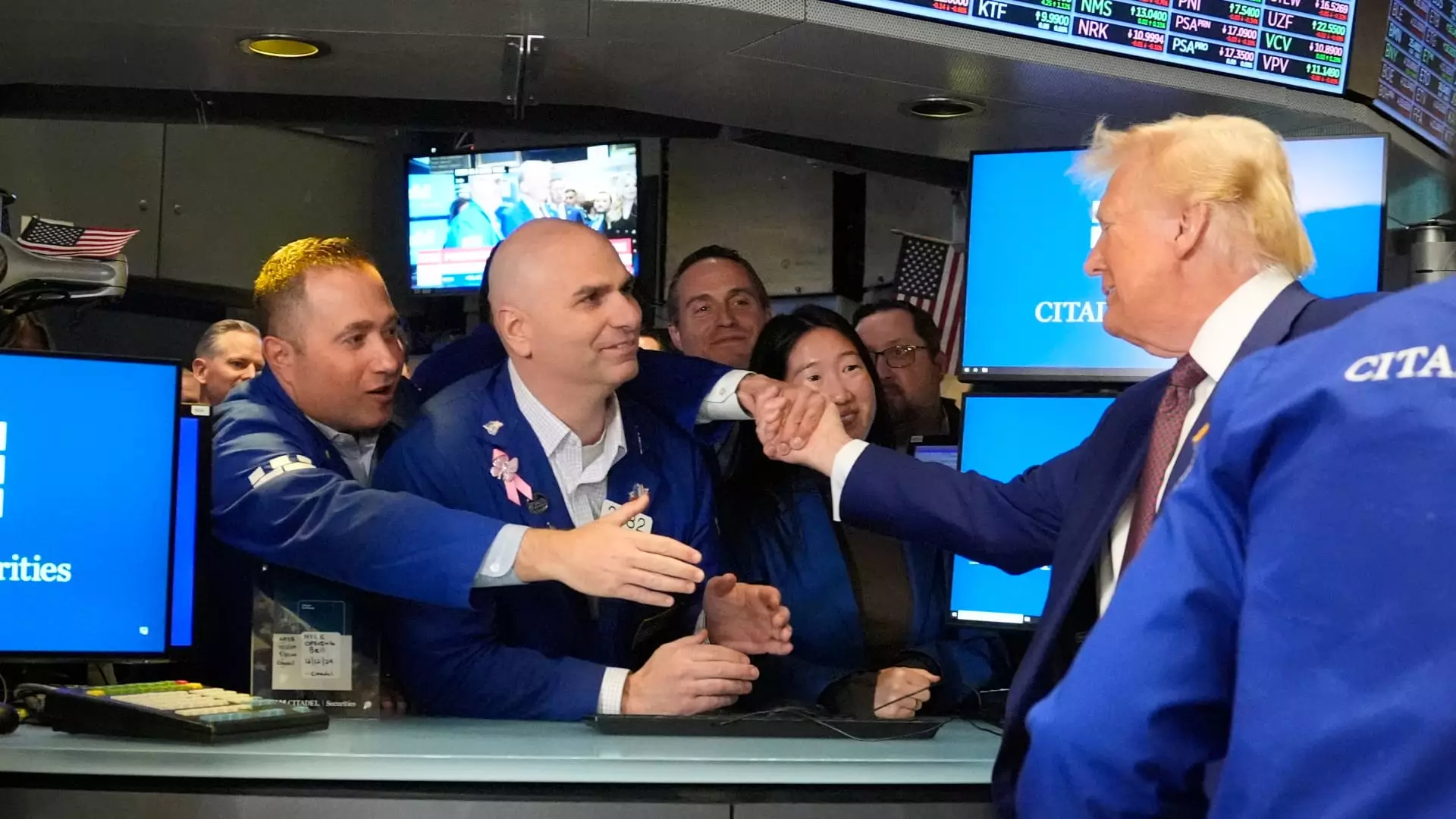When President-elect Donald Trump invoked the opening bell for the New York Stock Exchange, he was stepping into a multifaceted landscape shaped by his policies and economic strategies. Rather than giving an outright buy recommendation, Trump articulated caution regarding immediate stock investments, suggesting potential volatility ahead. His engagement with prominent financial figures and discussion on tax reforms highlight his administration’s pivotal role in shaping economic sentiments, but this also opens the door for critical evaluation of his strategies and their long-term implications.
During the CNBC interview with Jim Cramer, Trump emphasized the unpredictability of the stock market, which reflects his understanding of investor psychology. Instead of a bullish declaration, he opted for a hedged approach, indicating a reluctance to fuel speculative behavior in an already volatile market. Trump’s recognition of the potential for dips suggests that he is aware of the complex interplay between market trends, investor confidence, and economic stability. By refraining from encouraging immediate stock purchases, he demonstrates a prudent perspective that may resonate with cautious investors who are wary of economic fluctuations.
Historical Performance and Expectations
The Trump administration often cited stock market growth as a metric of economic success. The S&P 500’s impressive surge of nearly 68% during his initial term was buoyed by the corporate tax cuts and historically low interest rates instituted by the Federal Reserve. These policy decisions effectively created an environment conducive to investment and corporate growth. However, this simplistic correlation raises critical questions: Is stock market performance a genuine reflection of the broader economy, or does it obscure underlying issues such as wage stagnation and income inequality? The discourse surrounding economic performance becomes multifaceted when one considers the disparate impacts experienced by various socioeconomic groups.
Trump’s remarks about the potential for further tax cuts, specifically the proposed reduction of the corporate tax from 21% to 15%, play into a broader narrative of American manufacturing revival. His insistence on “building products in the USA” encapsulates a blend of nationalism and economic strategy. However, this proposal requires critical examination. Are these tax cuts sustainable? Will they truly incentivize domestic manufacturing without leading to cuts in essential social programs? The risk exists that such initiatives could disproportionately benefit large corporations while failing to address systemic economic challenges.
While Trump retained an optimistic outlook on the long-term prospects of the United States, the challenge lies in delivering concrete benefits to the average American worker. Statements by industry leaders like Bill Ackman underscore a fundamental belief in the relationship between business success, market performance, and wage growth. Yet, this perspective should not ignore the critical roles of technological disruption and globalization in reshaping job markets. The rising tide of stock prices may not necessarily elevate all boats equally, and this challenge persists as Trump’s new administration prepares to navigate complex economic waters.
While Trump’s engagement with the stock market speaks to a broader narrative of economic revival and corporate success, it also raises essential questions about inclusivity, sustainability, and the realities of the American economic landscape. As the administration embarks on its new chapter, a critical lens will be necessary to discern between rhetoric and tangible results.

